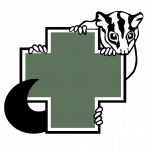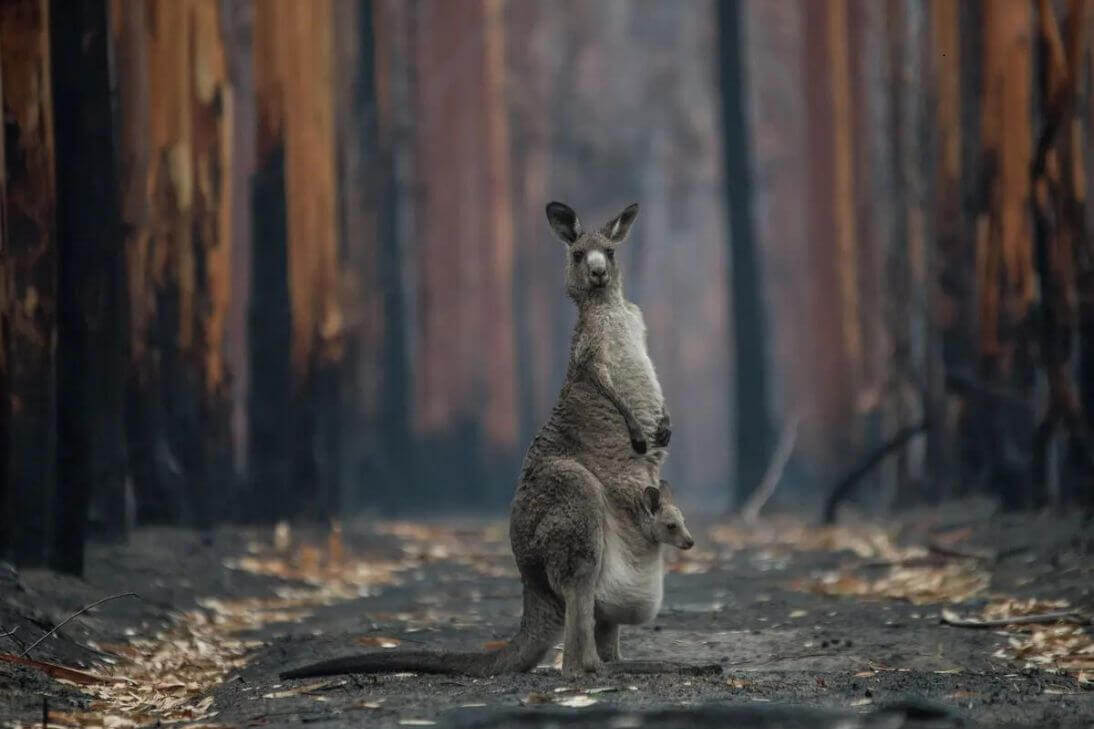How you can help injured wildlife
Only licensed wildlife rescue and rehabilitation providers or qualified vets may take injured or orphaned native animals into care. You can use the IFAW Wildlife Rescue App (International Fund for Animal Welfare) to quickly find the closest one to you to contact.
If you find an injured animal, and it is safe to do so, contain it in a covered box in a dark, quiet place while while waiting for a rescuer or taking an animal to a wildlife carer or vet.
Helping wildlife emergencies in extreme conditions
Although not injured, during drought or fire native animals may need access to water, food or shelter, until their natural environment recovers. Only provide water or food for native wildlife if you have the permission of the landowner or manager, including in national parks, state forests, council and crown land. You are not allowed to feed any animal in a park unless it is done with the consent of a park authority and in accordance with any conditions set. This includes leaving any vegetable matter, agricultural materials or containers.
During a flood, native animals made temporarily homeless may need access to short term shelter to dry out, or until flood water recedes. It is not recommended to provide food, water or heating unless directed by a licensed wildlife carer or vet.
Assess if wildlife needs water or food
Native plants and animals have evolved over millions of years and have developed strategies to assist them through natural disasters. Some bushland areas may be less affected than others nearby, allowing surviving wildlife to retreat to these areas to seek out food, water and shelter.
If there is vegetation but no reliable source of water, then providing water only is the best way you can help. Remember, you won’t see many of our nocturnal animals in the day time, so you need to look for signs in the landscape.
If you do assist wildlife by providing food or water, you need to regularly reassess to decide when help is no longer needed.
Wildlife don’t need water provided when:
-
a reliable source of water is running in creeks and rivers for at least a month
-
dams are at least 20% full
-
seasonal flowers or fruit are available for nectar feeders as a source of moisture.
Wildlife don’t need food provided when:
-
a reliable source of green pick or ground cover is available for native browsers
-
some canopy cover or new growth is on trees
-
a seasonal source of nectar and fruit is available for nectar feeders
-
foraging native animals are active at times you would usually expect to see them.
Consider the risks
Take all necessary steps to minimise the risks to you, wildlife and recovering bushland ecosystems. Do your homework. Find out what species live in your local area, their needs, if they require assistance and if you have permission from the landowner or manager.
A plan is needed for regular inspections, refilling and removal of unused or spoiled contents, and eventual removal of containers as conditions improve. Without a plan, a good intention may create unintended harm.
Providing water
Many animals can only survive a matter of days without water. You can help a range of native animals by giving them a safe supply of clean water, changed daily to prevent the spread of disease. Never add electrolytes or sugar to the water as it can be harmful.
Swimming pools can present a danger to thirsty wildlife if no other water source is available. Keep your pool covered or secure a flotation device to the side of the pool, such as a rope threaded through a pool noodle, to allow wildlife to escape if they fall in while drinking. Check it daily.
Providing food
Feeding native animals is generally not recommended because they have very special and diverse dietary needs. Although it’s always best for the health of wildlife to forage for food and water naturally, in times of natural disaster when natural food resources are scarce, you may want to help by providing food. Only supplementary feed until nature begins to recover. If there is still vegetation, providing water only is the best way you can help.
Remember:
-
What can be offered to one animal in small amounts may be harmful to another and could result in debilitating disease or even death. Overfeeding can be fatal. Always offer fresh water.
-
Remove uneaten food. Wash your hands before and after cleaning and drying all food and water containers. Change them daily to prevent the spread of disease and attracting pests. Disinfect containers using a dishwasher or by soaking them in a solution of one cup of bleach added to four litres of water.
-
Secure food containers in trees. Never throw food, including birdseed, directly onto the ground as it attracts predators and can make some wildlife sick.
-
Never feed wildlife bread, honey, sugar, avocado, chocolate or dairy products as they are very harmful.
-
Do not feed wildlife mixtures of peanut butter, honey and rolled oats (known as bait or wildlife balls) as they are harmful to some animals.
-
For information about koalas see Helping Koalas in emergencies.
-
For information about flying-foxes see Helping flying-foxes in emergencies. Do not approach flying-foxes without vaccination for Australian bat lyssavirus and wearing protective gear. Seek urgent medical advice if scratched.
Providing shelter
You can help by making your garden wildlife-friendly by growing native food plants and creating shelter and habitat by using logs, rocks and nest boxes (PDF 1.45 MB).
-
Find out more about living with native animals
Disposing of deceased wildlife
Finding deceased wildlife can be distressing and can also pose a risk to your health and safety. If you find deceased wildlife, please contact your local wildlife rescue organisation. They will keep a record of any native animal reported, which will assist in understanding the impact of the emergency on wildlife and may assist in future conservation actions.
Carcass disposal should occur as soon as practical after an animal has died. Handling should be kept to a minimum using appropriate personal protective equipment including:
-
gloves
-
leather or rubber boots
-
clothes that cover exposed skin
-
eye protection
-
a P2 face mask.
Small animals that can be handled easily should be put into a suitable container or garbage bag and disposed of through your regular council bin service.
Flying-foxes must only be handled by a registered and vaccinated wildlife carer due to the risk of Australian bat lyssavirus. If you have had no physical contact, then there is no risk of contracting Australian bat lyssavirus. Contact your local wildlife rescue organisation.
Large animals including kangaroos that cannot be safely disposed of in your regular council bin service should be disposed of according to advice in the Department of Primary Industries Primefact – Animal carcass disposal.
During wildlife emergencies you can also request assistance for disposal of large animals, through the Agriculture and Animal Services Hotline 1800 814 647.
To report pollution or debris on beaches or in rivers caused by floods, or if you see a potential incident with serious environmental impacts please contact the Environment Line immediately on 131 555 or by email at info@epa.nsw.gov.au

